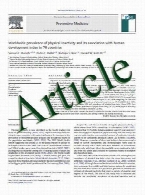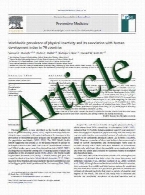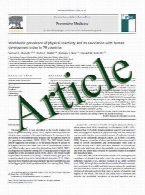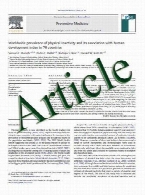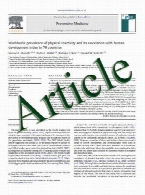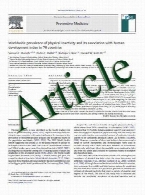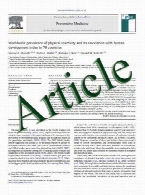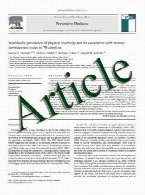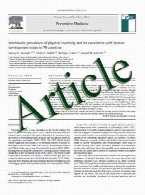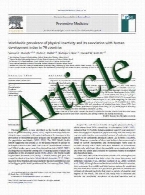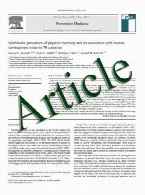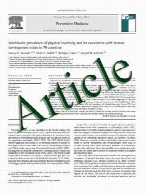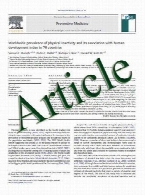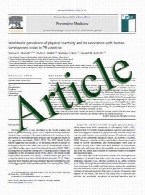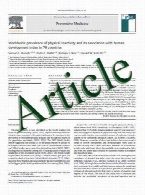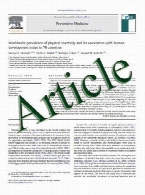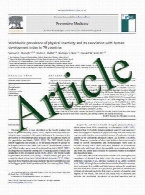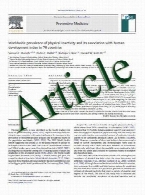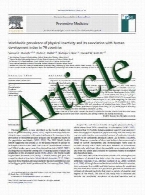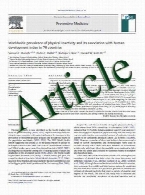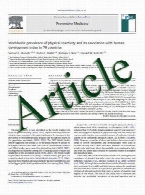

Mutation analysis of RAD51L1 (R ...
Although a significant proportion of familial aggregation of breast cancer remains unexplained, many of the currently known breast cancer susceptibi ...
Mutation analysis of BRIP1 in m ...
Breast cancer (BC) in men is rare compared with BC in women, but its incidence is increasing along with attention toward this uncommon disease. Alth ...
Is the toxicity of adjuvant aro ...
Adjuvant endocrine treatment-related adverse effects have a strong impact on patients’ quality of life and thereby limit therapy’s risk benefit rati ...
Circulating levels of inflammat ...
Mammographic density is strongly associated with breast cancer risk. Inflammation is involved in breast carcinogenesis, perhaps through effects on m ...
Polymorphisms of the nuclear re ...
Organic anion transporter polypeptides (OATPs, SLCOs) are involved in the uptake of conjugates steroid hormones such as estrone-3-sulfate. It has be ...
Paraneoplastic polymyositis ass ...
The association of polymyositis and cancer was first described in 1916, the most frequent cancers being mammary and gynecological for women, broncho ...
The CASP8 rs3834129 polymorphis ...
The rs3834129 polymorphism, in the promoter of CASP8 gene, has been recently reported as associated with breast cancer risk in the general populatio ...
EMSY and CCND1 amplification in ...
EMSY is a putative oncogene amplified in a minority of breast carcinomas, its protein product interacts with and transcriptionally silences BRCA2. W ...
Genomic rearrangements of the B ...
Point mutations and small deletions and insertions in BRCA1 and BRCA2 genes are responsible of about 20% of hereditary breast cancer cases in Chilea ...
Association of a vascular endot ...
Published studies on the association between the vascular endothelial growth factor (VEGF) gene 936 C/T polymorphism and breast cancer risk are inco ...
No evidence for an association ...
ABCC11 is an ATP-binding cassette transporter responsible for the transport of a diverse range of lipophilic compounds. A single nucleotide polymorp ...
Lack of association between HER ...
Epidemiological studies have investigated the association between HER2 codon 655 polymorphism and breast cancer susceptibility. However, the results ...
The non-breast-cancer death rat ...
Non-breast-cancer deaths currently account for almost half of deaths among breast carcinoma patients in the 15 years following diagnosis. Understand ...
Expression of IGF1R in normal b ...
The growth hormone and insulin-like growth factor (IGF) axis plays an essential role in the growth and development of the mammary gland. IGF1 and IG ...
Failure of ovarian ablation wit ...
To report an unanticipated pregnancy during ovarian ablation treatment with goserelin (10.8 mg SC every 12 weeks) in a 26-year old female with breas ...
PALB2 mutations in German and R ...
Since germline mutations in the PALB2 (Partner and Localizer of BRCA2) gene have been identified as breast cancer (BC) susceptibility alleles, the g ...
Breast cancer scalp metastasis ...
Chemotherapy-induced alopecia is a commonly feared chemotherapy side effect and can be prevented using scalp cooling. Scalp metastasis is a rare sit ...
The association between two pol ...
Emerging evidence has shown that miRNAs participate in human carcinogenesis as tumor suppressors or oncogenes. Single nucleotide polymorphism (SNP) ...
Complete response in HER2+ lept ...
Trastuzumab, a monoclonal antibody against the HER2 receptor, is a major breakthrough in the treatment of HER2? breast cancer. However, its high mol ...
Genetic variants in ultraconser ...
Ultraconserved elements (UCEs) are the most extreme representatives of conserved non-coding sequences. Recent studies have indicated thatUCEs are no ...
Aromatase immunoreactivity is i ...
Mammographic breast density (MBD) is one of the strongest risk factors for breast cancer. Unfortunately, the biologic basis underlying this associat ...
Ductal carcinoma in situ: trend ...
To describe therapy and changes in therapy over time for women diagnosed with ductal carcinoma in situ (DCIS) and treated in the community setting. ...
The influence of travel time on ...
Travel time has been shown to influence some aspects of cancer characteristics at diagnosis and care for women with breast cancer, but important gap ...
Reproductive factors associated ...
To determine the mechanism by which menstrual and reproductive factors are associated with the risk of breast cancer, we examined the relationships ...
Risk of aggressive breast cance ...
The high morbidity and aggressive behavior of breast cancer are associated with genetic variations. Single nucleotide polymorphisms (SNPs) in many g ...

